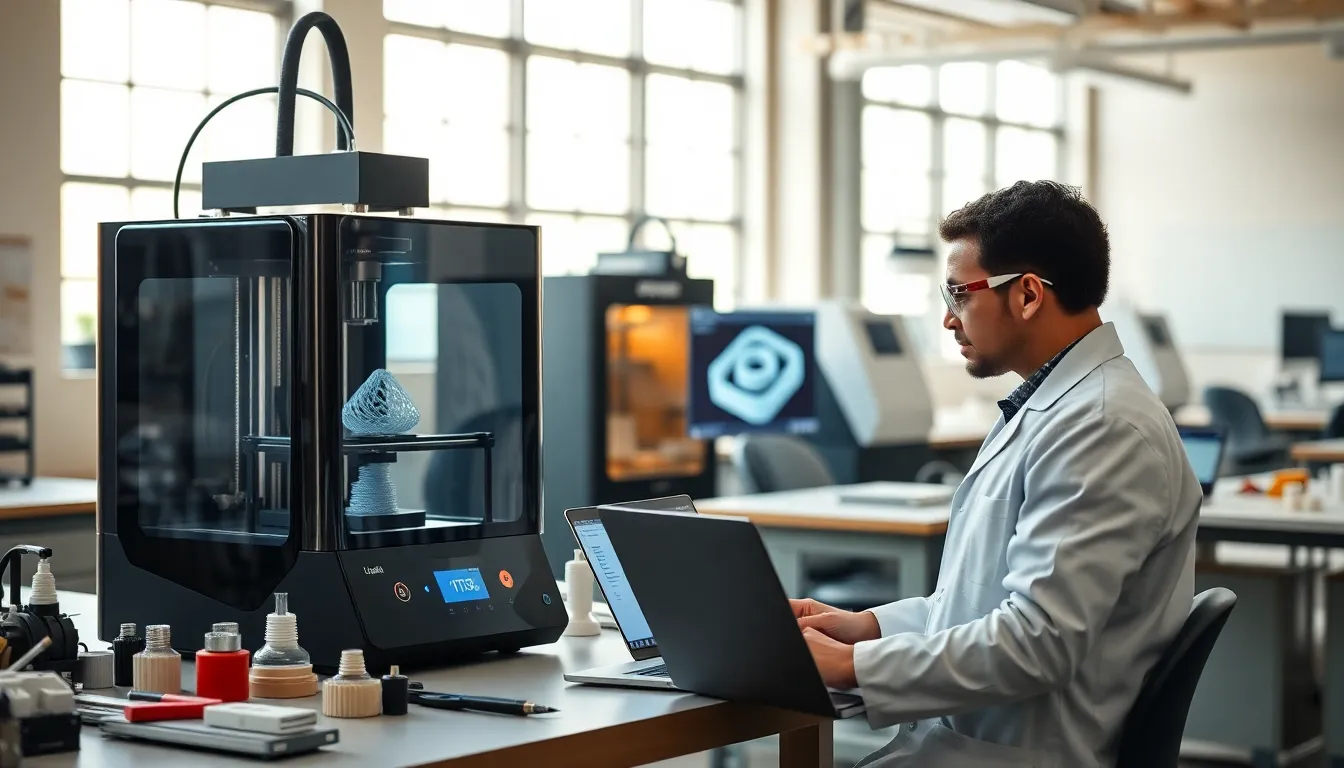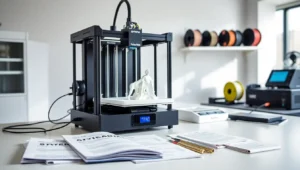Ever marveled at a perfectly crafted figurine or the sleek parts of a high-tech gadget? Welcome to the world of 3D printing. A 3D printing engineer takes visionary ideas and turns them into tangible reality, one layer at a time. But what does it take to thrive in this cutting-edge field? You’re about to discover the surprising mix of creativity and technical savvy needed to sculpt the future, without a chisel in sight.
Table of Contents
ToggleUnderstanding the Role of a 3D Printing Engineer

3D printing engineers are the unsung heroes behind the scenes in the realm of manufacturing and product development. They blend engineering principles with artistic design to pioneer everything from intricate prototypes to final products.
Key Responsibilities and Tasks
In essence, a 3D printing engineer wears multiple hats. They design models using computer-aided design (CAD) software, select appropriate materials, and configure printing processes to ensure smooth production flow. Quality control is central to their role. They rigorously test prints for durability and precision, fine-tuning designs to meet specifications accurately. Collaborating with multidisciplinary teams often means they engage with designers, manufacturers, and sometimes even biologists to develop innovative solutions.
Skills Required for Success
What does it take to excel in this exciting career? A solid foundation in engineering principles and a knack for visualization are paramount. Familiarity with various software tools enhances design capabilities and facilitates communication with team members. Adaptability is vital, as the field continuously evolves with new technologies. Strong problem-solving skills come into play when troubleshooting printing issues or optimizing processes. And let’s not forget creativity, the lifeblood of any engineer working in 3D printing.
Educational Pathways for Aspiring Engineers
Curious about how to embark on this fulfilling career? An educational roadmap lights the way.
Relevant Degrees and Certifications
Aspiring 3D printing engineers typically pursue degrees in mechanical engineering, materials science, or industrial design. Advanced degrees can further refine expertise, focusing on specialized areas like additive manufacturing. Certifications in specific printing technologies or software programs can bolster a resume, demonstrating commitment and updated skill levels. The combination of formal education and certifications provides a comprehensive foundation tailored to the intricacies of the field.
Importance of Hands-On Experience
Yet, knowledge gleaned from textbooks only goes so far. Real-world experience stands as a cornerstone of becoming a proficient engineer. Internships or cooperative education programs offer invaluable on-the-job training, allowing students to grasp practical applications of their learning. Many universities even have partnerships with companies that encourage students to work on actual projects, fostering industry connections and promoting an easy transition from classroom to workplace.
Industries Utilizing 3D Printing Engineers
Diverse industries have embraced the talents of 3D printing engineers, transforming the way products are designed and manufactured.
Manufacturing and Aerospace
In the manufacturing sector, engineers optimize production lines, cut costs, and expedite timelines by utilizing 3D printing techniques. Aerospace companies have taken things further, creating lightweight components that reduce fuel consumption. The ability to rapidly prototype means engineers can test multiple designs quickly before committing to the final choice, leading to breakthrough innovations.
Healthcare and Bioprinting
The healthcare field is also venturing into 3D printing terrain. From custom prosthetics tailored to individual patients to bioprinting tissues for regenerative medicine, 3D printing engineers are at the forefront of medical advancements. These applications not only personalize patient care but also promise to revolutionize how medical solutions are delivered, making lives better one print at a time.
Challenges and Future Trends in 3D Printing
As with all technology, challenges loom over the field of 3D printing. Understanding these hurdles is crucial for those looking to enter the profession.
Overcoming Technical Limitations
The landscape of 3D printing continuously shifts: but, technical limitations still exist. Print speed, volume, and material properties can hinder production efficiency. Engineers must stay updated with emerging technologies like multi-material printing and hybrid methods to mitigate these restrictions, ensuring the output meets the ever-growing demands of various industries.
Sustainability and Material Innovations
Sustainability presents another challenge, pushing engineers to develop eco-friendly materials for various applications. Innovations in bio-based plastics and recycled materials offer exciting possibilities, appealing to environmentally conscious consumers and companies alike. By embracing sustainability, 3D printing engineers can help shape a greener future while driving industry growth.





